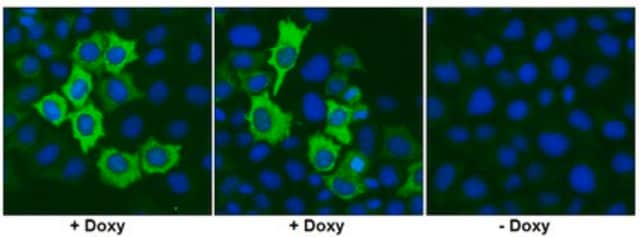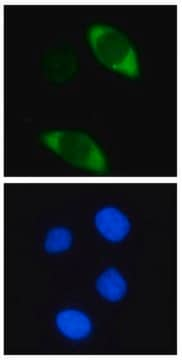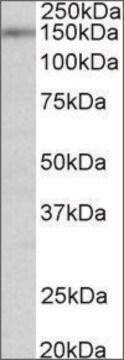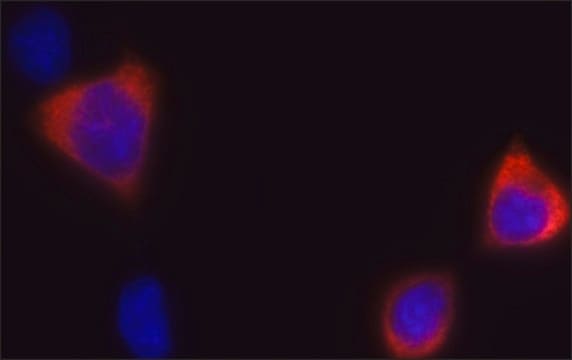MAB131872
Anti-Cas9 Antibody, clone 6F7
clone 6F7, from mouse
Synonym(s):
CRISPR-associated endonuclease Cas9, SaCas9
About This Item
Recommended Products
biological source
mouse
Quality Level
antibody form
purified immunoglobulin
antibody product type
primary antibodies
clone
6F7, monoclonal
species reactivity
Staphylococcus aureus, mouse
technique(s)
immunocytochemistry: suitable
western blot: suitable
isotype
IgG1κ
UniProt accession no.
shipped in
ambient
target post-translational modification
unmodified
General description
Specificity
Immunogen
Application
Western Blotting Analysis: A representative lot detected Cas9 in HEK293 overexpressing fusion protein containing GFP and C-terminus of Cas9 from S. aureus (Courtesy of Dr Gerry Shaw).
Quality
Western Blotting Analysis: A 1:1,000 dilution of this antibody detected Cas9 in 10 µg of HEK293 cell lysates overexpressing a fusion protein containing GFP and c-terminus of Cas9 from Staphylococcus aureus.
Target description
Physical form
Other Notes
Not finding the right product?
Try our Product Selector Tool.
Storage Class Code
10 - Combustible liquids
WGK
WGK 2
Certificates of Analysis (COA)
Search for Certificates of Analysis (COA) by entering the products Lot/Batch Number. Lot and Batch Numbers can be found on a product’s label following the words ‘Lot’ or ‘Batch’.
Already Own This Product?
Find documentation for the products that you have recently purchased in the Document Library.
Our team of scientists has experience in all areas of research including Life Science, Material Science, Chemical Synthesis, Chromatography, Analytical and many others.
Contact Technical Service








